How to care for a prayer plant - how to help this shade-loving plant to thrive
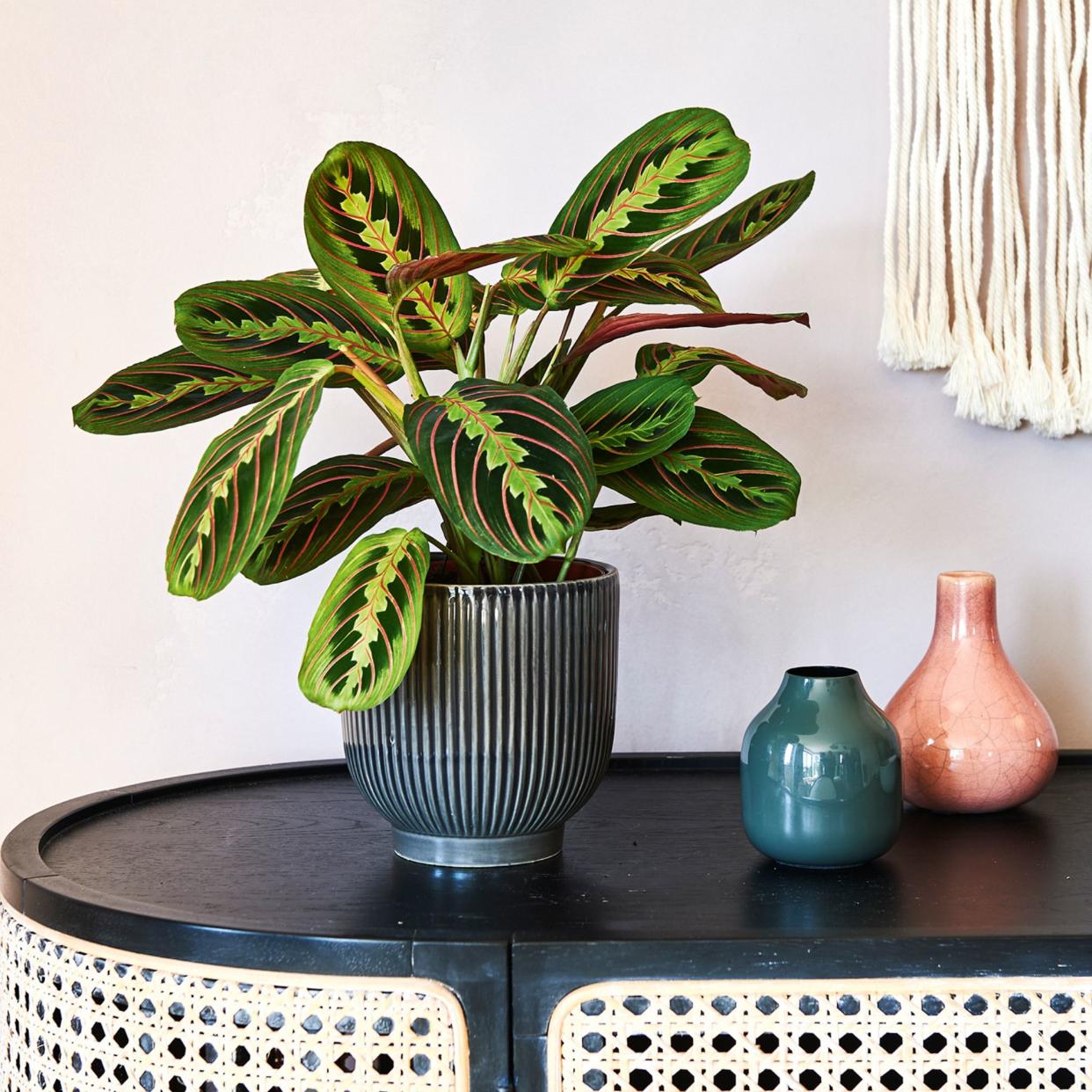
Loved for its rich colour and vibrant character, prayer plants are an iconic member of any houseplant collection.
Part of the Marantaceae family, these vibrant house plant ideas are renowned for their glossy green leaves and pink stripes, though there are other types of prayer plant, such as Maranta leuconeura var. Kerchoveana, and Maranta leuconeura ‘Lemon Lime’, which sees the leaves in a palette of green hues.
‘The maranta plant is known as the prayer plant because its leaves lie flat during the day and then fold up like praying hands at night,’ explains Dani Turner, customer experience director at Bunches. Calathea, which are from the same family as Maranta, are sometimes marketed as prayer plants but they do not close at night.
How to care for a prayer plant - What you will need
Prayer plant – varieties include Maranta leuconeura var. erythrophylla ‘Tricolour’ and Maranta leuconeura ‘Fascinator’
Plastic pot with drainage holes – one size larger than the size of the plant bought
Decorative pot without holes
A liquid houseplant fertiliser, for example, Baby Bio Houseplant Fertiliser on Amazon
A trowel
Houseplant compost, such as Westland Houseplant Potting mix on Amazon
Where to buy prayer plants

Prickle Plants
Best for beginners
Priced at only £6, this baby plant is perfect for beginners. Though only 6cm tall it will quickly grow into a beautiful houseplant.

Beards & Daisies
Best for purchasing security
Buying plants online can feel like a bit of a gamble – you can't check them over and they have to survive the postal service. Beards & Daisies has a 30-day guarantee so you don't need to worry.

Waitrose
Best supermarket prayer plant
Waitrose offers a good selection of prayer plants, including the pink striped 'Fascinator' and the vibrant 'Lemon Lime' variety.
Where should I keep my prayer plant at home?
As with any houseplant – for example, snake plants – the perfect position is one that mimics its natural environment. Prayer plants originate from the Central and South American rainforests where they grow on the forest floor meaning they thrive in darker conditions – making prayer plants one of the best houseplants for low-light.
‘Prayer plants are also sensitive to cold or temperature changes – warm, humid bathrooms are great but not when you open the window,’ says Hayley Stephens, founder of Mint Plants.
‘In their natural habitat, prayer plants get dappled light at most, so keep away from bright windows – too much light will make it go pale and sad.’
Prayer plants are also good for our physical and mental health – in fact they are one of the best houseplants to boost wellbeing. ‘They purify the air, improve humidity and have a therapeutic presence. Prayer plants appear to go to sleep at night and wake each morning, which is a great grounding ritual to observe in your home,’ says Leaf Envy founder, Beth Chapman.
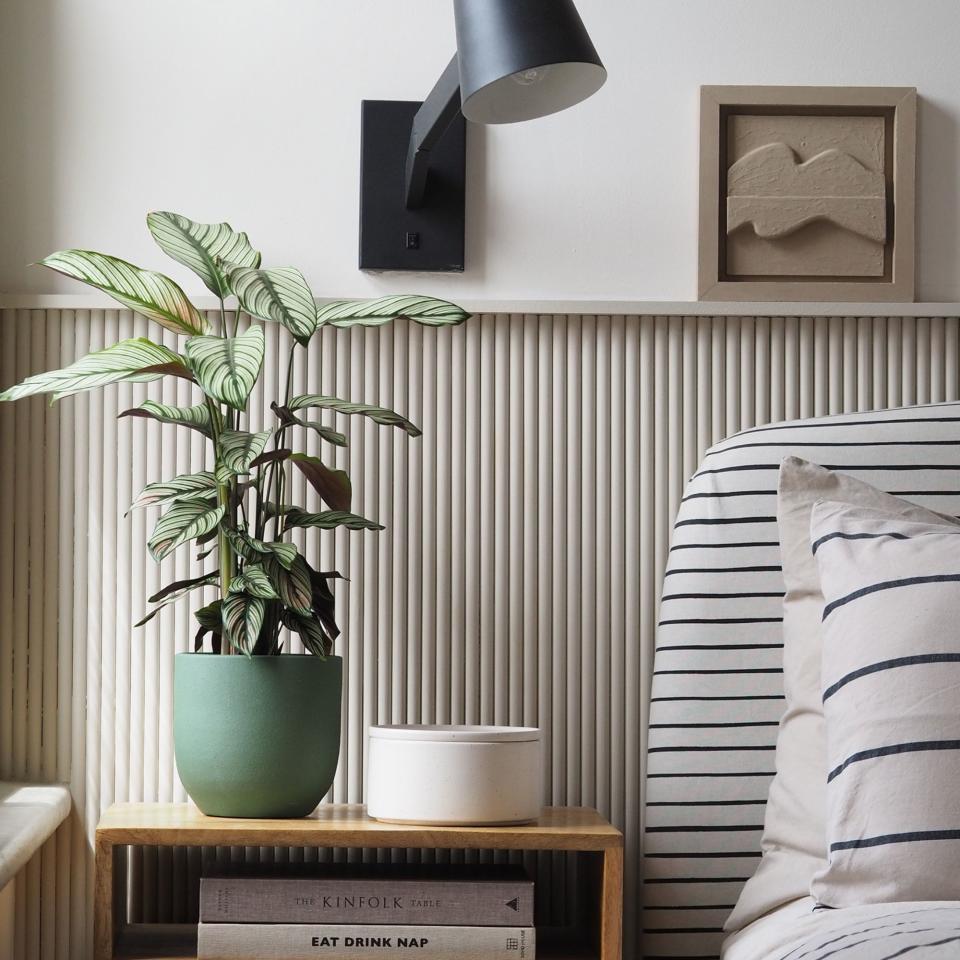
How often do you water a prayer plant?
The biggest challenge of raising a prayer plant is achieving the right levels of humidity. ‘A gentle misting will help to maintain moisture levels. Alternatively, you can place some pebbles under the base of the nursery pot and cover them with water. This will create a general humidity around the plant without flooding the soil,’ explains Holly Zawadzka, co-founder of Stupid Egg.
Another way to increase humidity is to group together lots of house plants – this can be beautifully realised as seen in these living room house plant ideas.
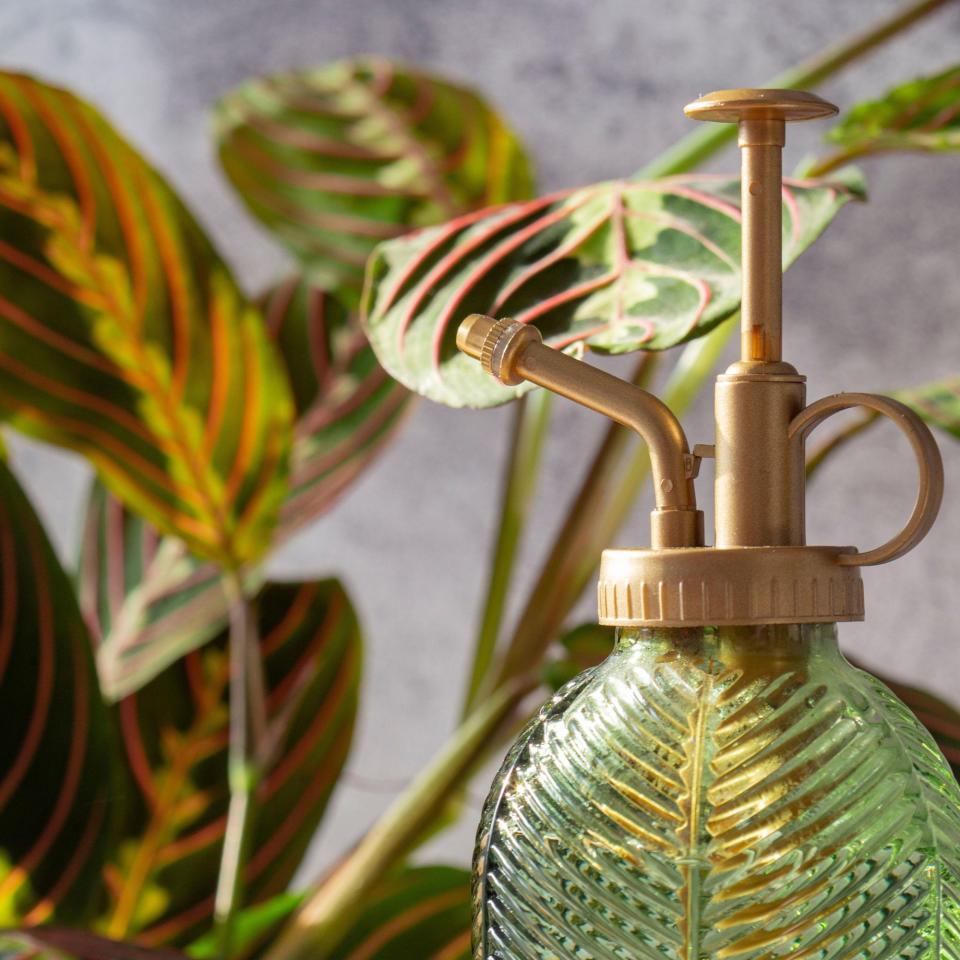
As moisture-loving plants, regular watering is key. ‘Prayer plants do not like to dry out,' adds Holly.
'We advise watering by touch rather than time. When the top 1-2cm of the soil feels dry it is time to get the watering can out. This method will ensure that you aren’t overwatering – especially in winter,’ adds Holly. ‘Another tip is to only water from the base. Place your plant in a bowl of water or pop some water in the bottom of the decorative planter. After approximately 30 minutes remove the plant or tip away any excess water. This way you are not flooding the roots or washing away those important nutrients in the soil.’
Prayer plants can be sensitive to the water you give them, especially if you live in a hard water area. ‘A sustainable way to get around this is to water with rainwater – your plant will be grateful for all the extra nutrients, too,’ advises Jo Lambell, founder of Beards & Daisies.
While peace plants aren't one of the easy-to-care for houseplants but they are worth the additional care – you'll fall in love in no time.
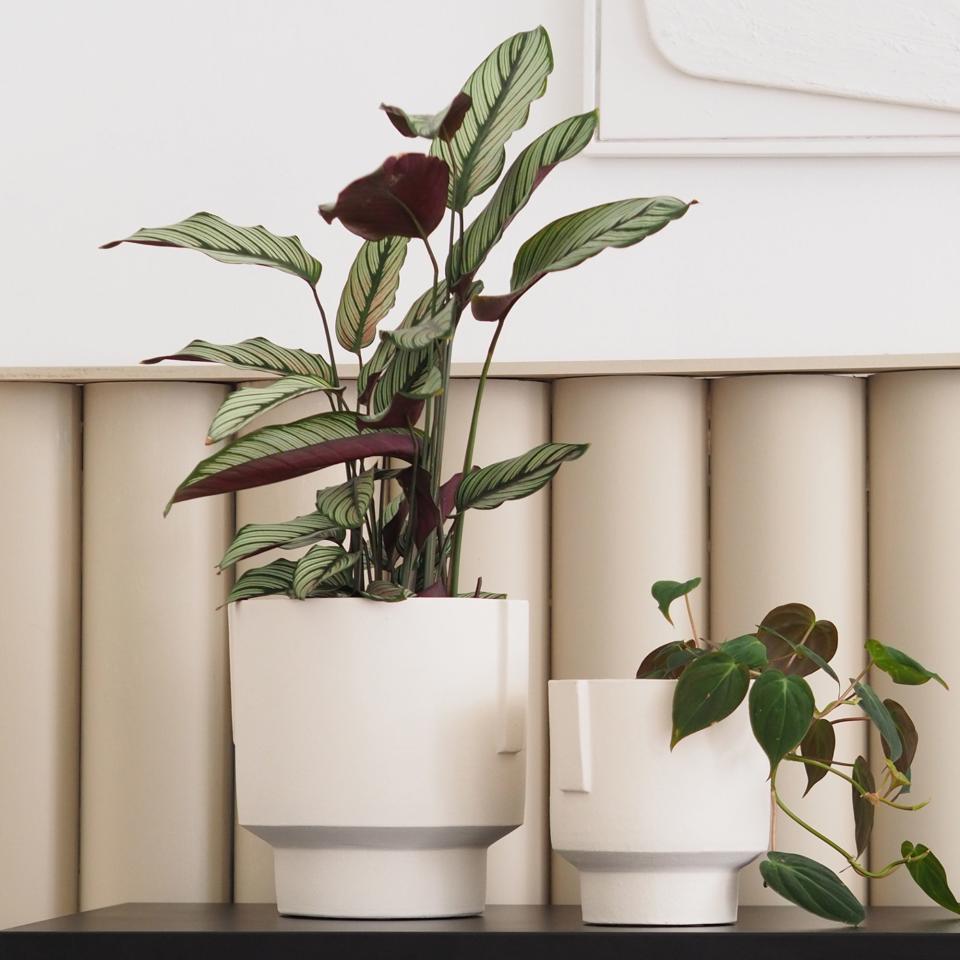
When should I repot a prayer plant?
Prayer plants are quick growers, so require regular repotting. ‘The best time of year to repot is spring or early summer when your plants are in a growth period and can handle the shock of moving house,’ advises Beth Chapman.
Despite its rapid growth pattern, opt for a pot that is only a few centimetres larger than the current one. ‘Increasing the pot size too quickly can cause issues. With too much spare soil the plant can drown in the excess water or it will spend all its time growing new roots to fill the pot rather than growing new leaves,’ explains Holly.
The process of repotting is similar to that of other houseplants, but Hayley advises using a soil that is ‘a mix of peat-free compost, perlite and coir.’
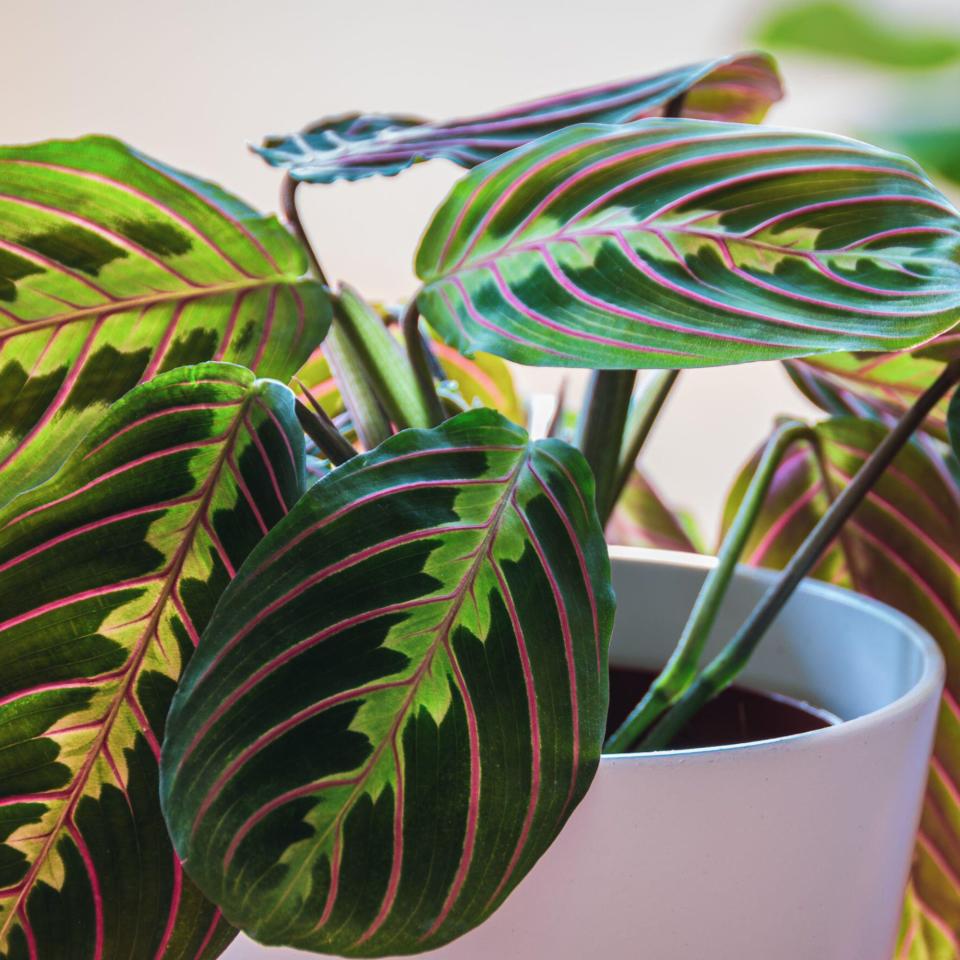
How often do you feed prayer plants?
As one most Instagrammed house plants, you need to keep your prayer plant looking pretty. Feeding is essential to ensure that your plant has enough energy. ‘It is important to feed your Maranta, especially during the growing season when the plant requires more energy to push up those fascinating leaves. Aim for every 3-5 weeks in the summer, reducing to every 6-8 weeks in winter,’ says Holly.
‘When happy, it will produce long upright stems of tiny lilac flowers,’ says Hayley. However, flowering demands a lot of energy, so in smaller plants it is best to remove the buds so the plant can focus its energy into producing leaves.

Can prayer plants be propagated from cuttings?
When it comes to houseplants, the more the merrier – whether you are looking to increase your own collection or gift them to loved ones. Thankfully, prayer plants are really easy to propagate.
‘Take cuttings beneath the first node of the stem, and pop them into water until they form roots – also known as hydroponics. They can then be planted in soil. The cuttings can also be placed directly into soil but controlling the water levels is trickier,’ says Holly. ‘Plant cuttings together in a pot for an instantly full plant or place them into the same pot as the parent to create a bushier plant.
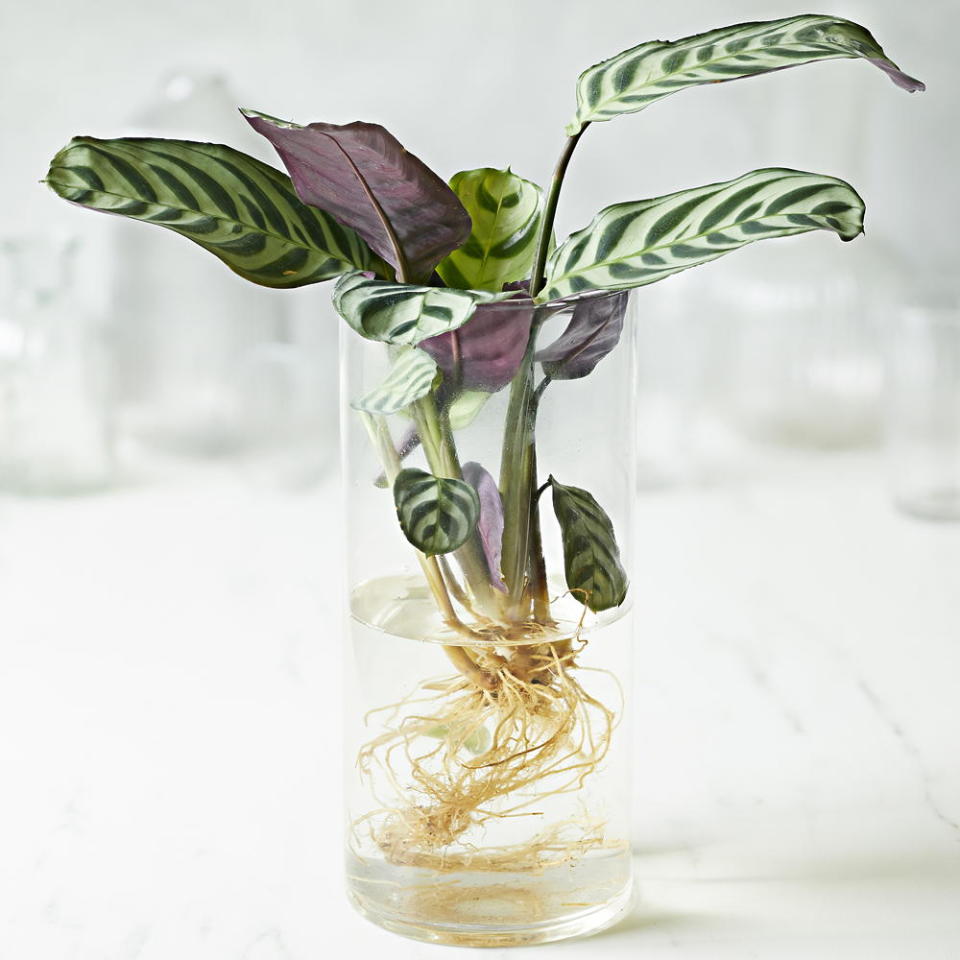
How do I know what's wrong with my prayer plants?
Yellowing leaves indicate poor drainage or overwatering. Ensure pot has adequate drainage and that the plant is not sitting in water. In extreme cases, repot in dry soil.
Curled brown leaves ‘Your prayer plant might be underwatered, exposed to cold drafts or be lacking humidity,’ says Beth Chapman.
Crispy edge leaves Exposure to direct sunlight can cause the leaves to scorch. Move out of direct sunlight and increase the humidity with regular misting.
Spider mites ‘Keep a humid environment and mist regularly to keep them at bay,’ advises Beth Chapman.

